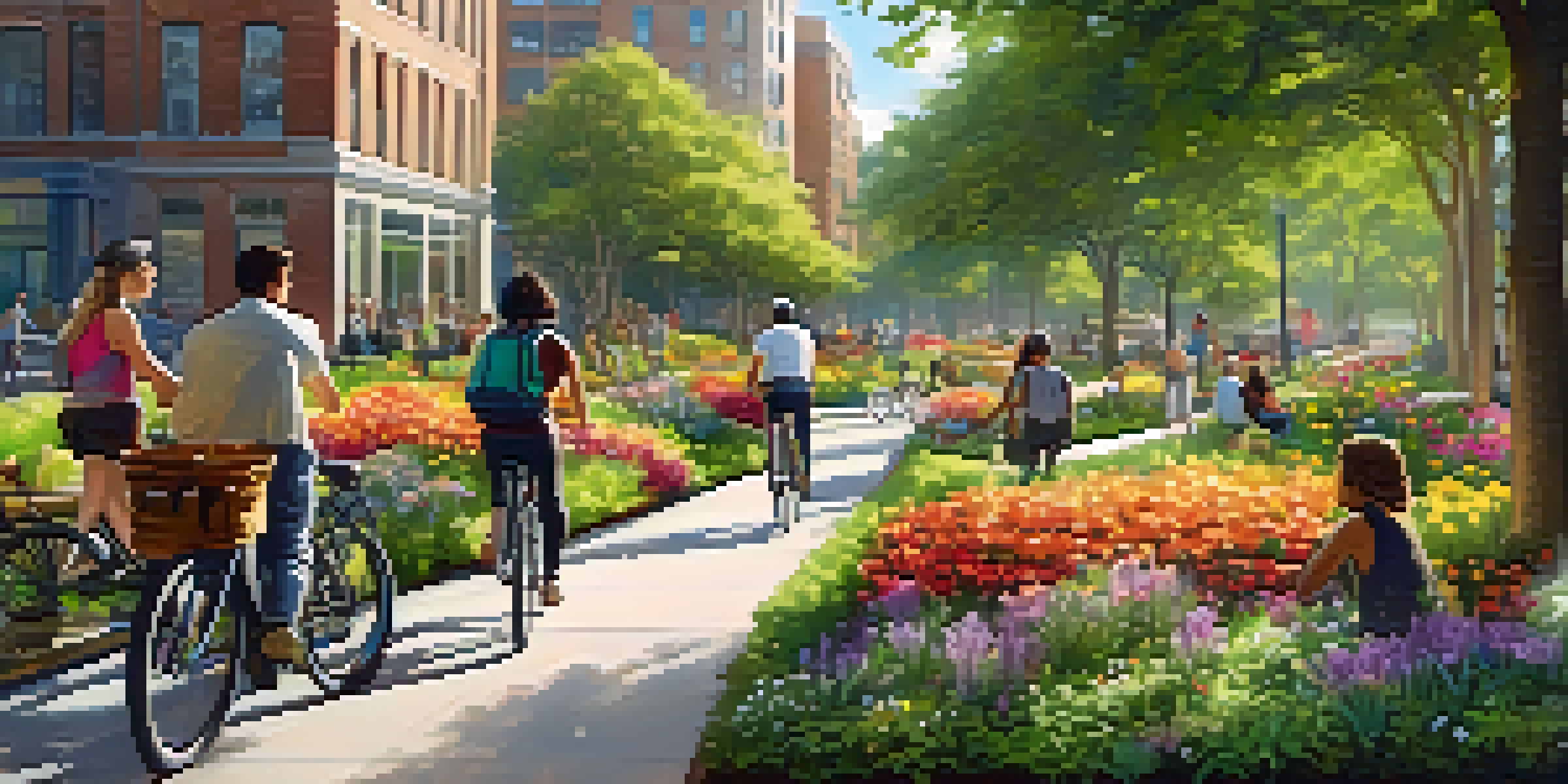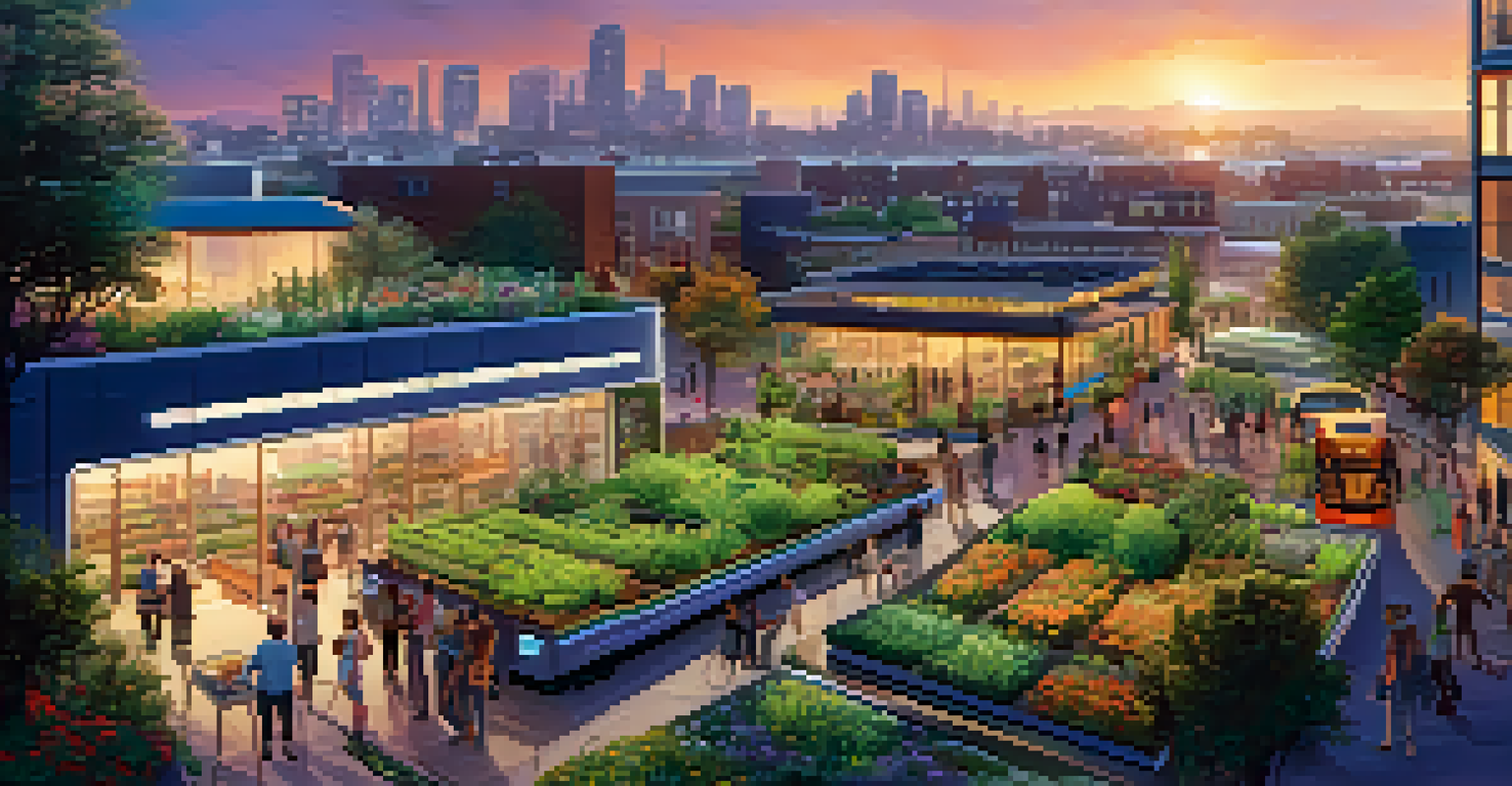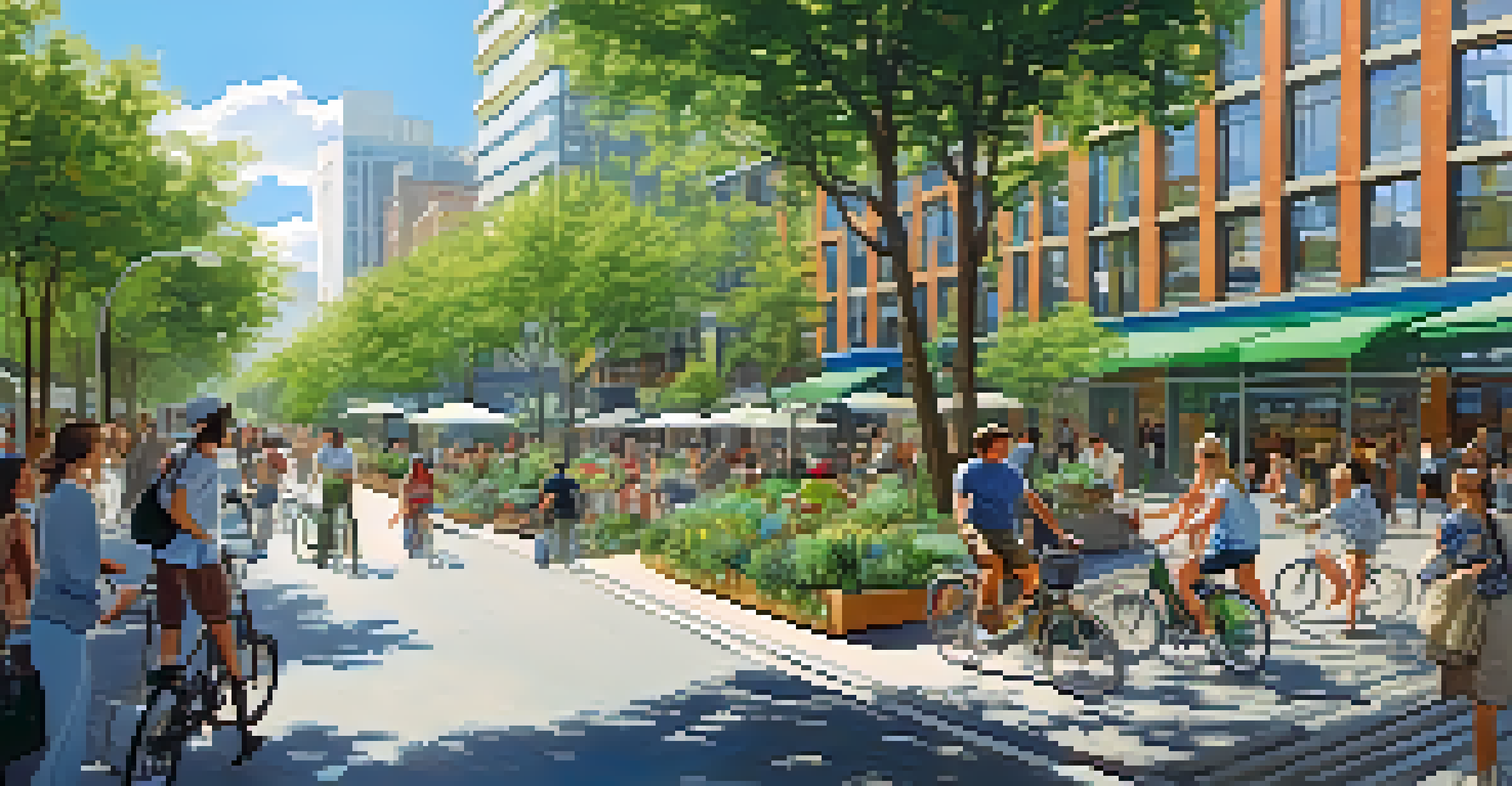The Shift Towards Eco-Friendly Urban Development

Understanding Eco-Friendly Urban Development
Eco-friendly urban development refers to designing cities in a way that minimizes their environmental impact. This approach focuses on sustainable practices that balance the needs of urban growth with the preservation of natural resources. Think of it as creating a harmonious relationship between people and the planet, where urban spaces enhance rather than degrade the environment.
The greatest threat to our planet is the belief that someone else will save it.
This movement has gained traction due to increasing awareness of climate change and environmental degradation. Urban areas are responsible for a significant portion of global greenhouse gas emissions, making it crucial to rethink how cities are built and operated. By adopting eco-friendly principles, cities can reduce their carbon footprint while improving residents' quality of life.
The shift is not just about using green materials; it's about creating entire ecosystems within urban settings. Integrating parks, green roofs, and energy-efficient buildings can transform a concrete jungle into a thriving, sustainable habitat. As more cities embrace these concepts, we can envision a future where urban living and environmental stewardship go hand in hand.
The Role of Sustainable Architecture
Sustainable architecture plays a pivotal role in eco-friendly urban development. By designing buildings that use energy and resources efficiently, architects can create spaces that are not only functional but also environmentally responsible. Imagine a building that generates its own energy through solar panels or utilizes rainwater for irrigation—this is the essence of sustainable design.

Implementing green building standards, like LEED (Leadership in Energy and Environmental Design), encourages developers to prioritize sustainability in their projects. These standards promote practices such as using non-toxic materials, maximizing natural light, and incorporating energy-efficient systems. As a result, buildings become less resource-intensive and healthier for occupants.
Sustainable Cities Enhance Lives
Eco-friendly urban development harmonizes urban growth with environmental preservation, improving residents' quality of life.
Moreover, sustainable architecture often leads to economic benefits. While the initial investment may be higher, the long-term savings on energy costs and maintenance can be significant. As more developers recognize these advantages, we can expect to see a surge in eco-friendly constructions that reshape our urban landscapes.
Green Transportation Solutions in Cities
Transportation is a major contributor to urban pollution, making it a key focus in eco-friendly development. Cities are increasingly adopting green transportation solutions, such as electric buses, bike-sharing programs, and pedestrian-friendly infrastructure. Picture a city where you can easily walk or bike to your destination, reducing the need for cars and easing traffic congestion.
Sustainability is not a goal to be reached, but a way of thinking and living.
Public transportation systems are also evolving to become more sustainable. Many cities are investing in electric and hybrid vehicles, which significantly reduce emissions compared to traditional diesel buses. Additionally, the integration of smart technology can optimize routes and schedules, making public transport a more attractive option for commuters.
These changes not only benefit the environment but also enhance the overall urban experience. By prioritizing green transportation, cities can create cleaner air and safer streets, encouraging residents to embrace more sustainable lifestyles. As we move forward, the push for eco-friendly transportation will be crucial in shaping the cities of tomorrow.
The Importance of Green Spaces
Green spaces are vital in eco-friendly urban development, offering numerous benefits to both the environment and residents. Parks, gardens, and green roofs help reduce urban heat, improve air quality, and provide habitats for wildlife. Imagine walking through a bustling city and stumbling upon a serene park—this contrast not only refreshes the mind but also contributes to a healthier ecosystem.
Creating more green spaces is essential for improving mental and physical well-being. Studies show that access to nature can reduce stress, promote physical activity, and enhance community connections. By incorporating parks and green corridors into urban planning, cities can foster healthier, happier communities.
Green Spaces Boost Urban Health
Incorporating parks and gardens into city planning promotes mental and physical well-being while supporting biodiversity.
Moreover, green spaces can serve as important tools for stormwater management. By allowing rainwater to soak into the ground, they help mitigate flooding and reduce the burden on drainage systems. As cities face increasing climate challenges, the value of green spaces becomes even more apparent, proving that nature can be an ally in urban resilience.
Community Involvement in Urban Planning
Community involvement is crucial in shaping eco-friendly urban development. Engaging residents in the planning process ensures that their needs and preferences are considered, leading to more successful and sustainable projects. Think of it as a recipe where everyone's input enhances the final dish, creating a sense of ownership and pride among community members.
Cities are increasingly using participatory planning methods, such as workshops and surveys, to gather feedback from residents. This collaborative approach helps identify local issues and prioritize solutions that resonate with the community. When people feel heard, they are more likely to support and participate in eco-friendly initiatives.
Empowering communities also fosters innovation. Local residents often have unique insights into their neighborhoods, which can lead to creative solutions for sustainability challenges. By working together, cities and communities can develop tailored strategies that promote eco-friendly practices while strengthening social ties.
Innovative Technologies Driving Change
Innovative technologies are playing a significant role in the push for eco-friendly urban development. From smart sensors that optimize energy use to apps that promote carpooling, technology is making cities more sustainable and efficient. Imagine a city where data-driven decisions lead to reduced waste and improved resource management—this is the future we are building.
Smart grid technology, for instance, allows for better energy distribution and consumption monitoring. By enabling real-time data analysis, cities can respond to energy needs dynamically, reducing reliance on fossil fuels. This not only cuts emissions but also helps lower energy costs for residents.
Community Drives Eco-Friendly Change
Engaging residents in urban planning fosters a sense of ownership and leads to innovative, sustainable solutions tailored to local needs.
Additionally, advancements in sustainable materials and construction techniques are revolutionizing urban development. From recycled materials to 3D printing, these innovations can significantly reduce the environmental impact of building projects. As technology continues to evolve, its integration into urban development will be essential for creating smarter, greener cities.
Policy Changes Supporting Green Initiatives
Government policies play a vital role in promoting eco-friendly urban development. By implementing incentives for sustainable practices, such as tax breaks for green buildings or grants for public transportation projects, cities can encourage developers and organizations to prioritize sustainability. This creates a supportive environment where eco-friendly initiatives can flourish.
Furthermore, regulations that mandate green building standards or limit emissions from vehicles help set a baseline for environmental responsibility. These policies drive innovation and motivate communities to adopt more sustainable practices. When local governments take the lead, they inspire citizens to follow suit, creating a ripple effect of positive change.

As climate change becomes an increasingly urgent issue, the need for effective policies will only grow. Advocating for comprehensive urban planning regulations that prioritize sustainability is essential for ensuring that future generations inherit livable, thriving cities. By aligning policy with eco-friendly goals, we can pave the way for a greener urban future.
The Future of Eco-Friendly Urban Development
The future of eco-friendly urban development looks promising as cities worldwide embrace sustainability. With growing awareness of environmental issues, urban planners are prioritizing green initiatives that enhance the quality of life for residents. Picture vibrant, green cities that seamlessly integrate nature with modern living—this is the vision many are working toward.
As technology continues to advance, we can expect even more innovative solutions to emerge. From vertical gardens to smart waste management systems, the possibilities for sustainable urban living are endless. Each leap forward brings us closer to cities that are not only environmentally friendly but also economically viable and socially inclusive.
Ultimately, the shift toward eco-friendly urban development is a collective journey. It requires collaboration among governments, businesses, and communities to achieve lasting change. By fostering a culture of sustainability, we can create urban spaces that honor both people and the planet, ensuring a brighter future for generations to come.